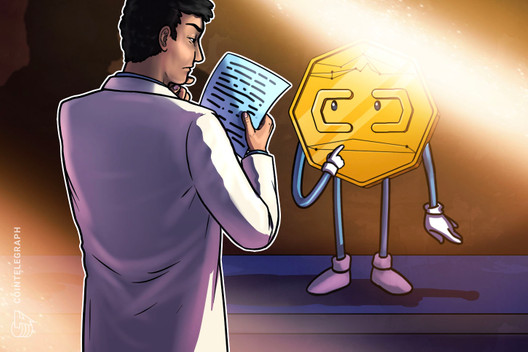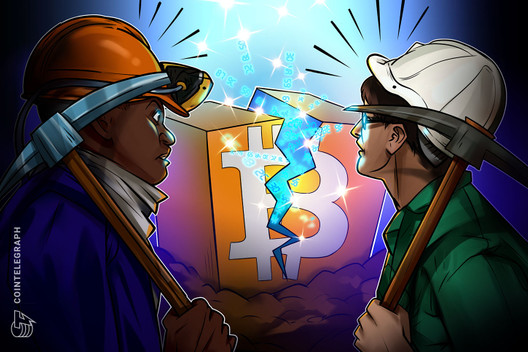
This is the first part of a deep dive into the years-long debate between proponents of Proof of Work and Proof of Stake. Which one is better and why?
This is the first of two articles providing a deeper dive into the eternal debate between the Proof of Stake (PoS) and Proof of Work (PoW) consensus algorithms. This part will focus on the basics, while also discussing the issue of wealth concentration and inequality, which is often at the center of any community argument.
Bitcoin (BTC) and many of the original cryptocurrencies were born as pure PoW systems.
Proof of Stake was first pioneered in 2013 by Peercoin, a project that exists to this day.
Peercoin’s contribution to the popularity of PoS is likely dwarfed by Ethereum (ETH) and its goal to transition from PoW — which has turned out to be a very long journey. Projects such as Cardano (ADA) avoided PoW entirely, deciding on PoS after using a formal approach to assess consensus mechanisms.
The Bitcoin and Monero (XMR) communities remain some of the staunchest proponents of mining and Proof of Work.
What is a consensus algorithm?
In any blockchain, the consensus algorithm is designed to solve the issue of trust between the participants of a network. Used for payments, the consensus algorithm is the final piece in the complex cryptographic puzzle that makes cryptocurrency work.
Basic features of a transaction, such as ownership and amount, are easy to verify with the help of public key cryptography, which works through fundamental mathematical properties.
Consensus algorithms exist to mitigate the “double-spend” attack, where a malicious actor is able to spend the same coin twice (or any number of times). Solving this issue requires a deliberate decision on which of the two spends is valid
There are no pure-mathematical solutions to this problem. Instead, consensus algorithms use a combination of cryptography and economic incentives to maintain a functional network.
Bitcoin’s consensus is based on a simple rule — the longest chain of blocks is the only valid one. The system was later termed Nakamoto Consensus, in honor of Bitcoin’s anonymous founder.
In order to make the concept work, adding blocks to each chain must be relatively difficult. This is where Proof of Work and mining come in. Each block is secured through cryptographic techniques that require miners to commit computing power in order to add blocks.
As computing power is directly proportional to electricity usage, Bitcoin is secured directly by a fundamental physical quantity — energy.
Under Proof of Stake, the network secures itself through the commitment of a stake — a certain amount of capital in the form of the network’s own tokens. Its security is meant to be derived directly from the perceived economic value of the network — how expensive it is to purchase a majority stake.
But PoW networks also have a close correlation between economic value and security. Miners receive coins as a reward, which means that the higher the value of the coin, the more money they make.
New miners are incentivized to add more hardware and spend more energy to receive their share of the rewards — which increases security. Over time, the profit for each individual miner trends toward an economic equilibrium dictated by electricity prices.
As a consequence, the amount of electricity dedicated to mining depends on the coin’s emission rate and market capitalization, while it is largely decoupled from the network’s performance or activity. Many PoS proponents see this as the biggest issue of PoW.
The energy problem
Cointelegraph spoke with Aggelos Kiayias, the chief scientist of IOHK, one of the entities behind Cardano, to learn more about their decision to use PoS. She said:
“The costs and energy consumption aspects of Proof of Work blockchains were definitely a consideration. It seemed natural to think: ‘is it possible to get a protocol that has a similar type of profile with, for example, Bitcoin’s blockchain, but somehow doesn't have the same energy expenditure?’”
The electricity consumption of Bitcoin mining is significant, with the latest estimate from July 2019 placing it at an annualized value of 70 Terawatt hours. This is close to the total electricity use of a small European country like Austria — although to put that in perspective it is also just 0.28% of the global figure.
The environmental impact is contested, with a July 2019 report estimating that 74% of Bitcoin mining is done through renewable sources. Proponents of PoW in Monero and Bitcoin often argue that the energy used in mining is not ‘wasted’, as it is necessary to ensure the resilience and decentralization of the consensus algorithm.
Jake Wocom-Pyatt, project lead for Decred, agrees with the environmental concerns but doesn't believe that PoS is necessarily the answer. Speaking with Cointelegraph, he said:
“PoW is indeed environmentally unfriendly. However, it must be considered that it is the first and simplest consensus system proposed. There are surely ways to improve PoW in the future.”
Though Proof of Stake also involves energy consumption for the delegation process, it is generally agreed to be far less energy-intensive than an equivalent Proof of Work solution. However, many argue that it compromises on too many things in order to achieve this.
Trusting PoS history
According to Wocom-Pyatt, pure PoS is reversible, which means that its history can be changed. This is similar to an argument made in a 2015 paper by Andrew Poelstra, a mathematician at Bitcoin development company Blockstream.
Poelstra argued that it is impossible for a user to rely on the proofs of stake to claim that a particular block is valid — because that stake itself depends on previous stakes within that blockchain, which are ultimately based on nothing. He wrote:
“Because there is no universal time (and to new users, no universal history), there is no way to differentiate users who are ‘now’ holding the currency from users who ‘were’ holding the currency.”
PoW history, by contrast, can be mathematically verified to be correct and can only be counterfeited by recreating its entire mining history. As noted by Poelstra, PoS proponents will argue that as long as short-term history can be secured, changes in old blocks will “contradict the history as remembered by participants of the system.”
This, according to him, “changes the trust model from that of Bitcoin” to one where consensus relies on always-online peers. While he believes that this could theoretically work, he argues that such a trust model is “vulnerable to legal pressure, attacks on ‘trusted’ entities and network attacks” — that it’s less censorship-resistant and decentralized, in short.
PoS proponents agree that a certain aspect of extra-protocol social coordination and consensus is necessary to maintain its security, but they argue that PoW systems ultimately rely on social consensus as well.
There is no clear winner in this line of argument. It is a philosophical debate that hinges on each individual’s opinion about whether actively relying on social consensus is an acceptable compromise to reduce electricity usage. It is perhaps for this reason that the debate has since moved into other contentious topics.
Acquiring stake Vs. acquiring work
Economic fairness is an often debated point for both types of consensus. In line with the principle of decentralization, both sides seek to minimize issues such as unfair access to the ecosystem or increasing wealth disparity.
Proof of Stake is often considered to be a system where “the rich get richer” due to the way it rewards the ownership of capital. In a Reddit AMA, Ethereum Foundation representatives argued that the opposite is true:
“In both bases, the owning of an asset allows for seeking gains on that asset. The difference between the two is that in PoS, the mapping of capital to gains is much more direct and fair (i.e. buy token, lock token, perform duties, gain X). Where in PoW, the mapping of capital to gains is highly dependent upon extra-protocol factors.”
In the Cardano network, Kiayias emphasized that PoS makes no distinction between the “rich man’s dollar” and the “poor man’s dollar.” He explained:
“Proof of Work systems, if you look at them, cannot give you a perfectly egalitarian version [of consensus] [...] Whereas in a Proof of Stake system, in principle, you could have a situation where one dollar in the pocket of the poor person would be equal in strength to a dollar in the pocket of a rich person.”
The CEO of Equilibrium, a project designing an algorithmic stablecoin on EOS, also agreed with the Ethereum Foundation’s argument:
“I totally support this assessment. Staking highly fungible tokens doesn't create any entry barriers and doesn't lead to any kind of disparity as long as the given tokens are accessible on the open market.”
They share the opinion that mining increases wealth disparity due to the accumulation of “extra-protocol” factors. Bulk discounts, early or even exclusive access to new hardware — all of these make Proof of Work inherently unfair, according to many PoS proponents.
Alejandro De La Torre, VP at Poolin, currently the largest Bitcoin mining pool, believes the exact opposite — that extra-protocol advantages make Proof of Work fair. Speaking with Cointelegraph, he said:
“In my opinion, the possibility of creating a new chip, accelerating the OS of a mining rig, or literally any other discovery that gives you an advantage in PoW mining is essentially the reason why PoW is the fairer 'cryptoeconomic' protocol. [...] PoS only relies on having the core asset; and the more you have the more you make. There is no other way to improve your situation in PoS mining, barring of course just purchasing more of the underlying staked asset.”
Equality of opportunity is what matters
Cointelegraph also spoke with Campbell R. Harvey, Professor of International Business at Duke University, to learn more about the concept of economic disparity and how it relates to consensus mechanisms. Summarizing his position on the wealth disparity gap in blockchain economics, he said:
“Yes, one critique of PoS is that the rich get richer. In PoW, it is more of a business operation with the miners not needing to hold BTC, ETH, etc. In PoS, you need to hold.”
Harvey argues that the two systems have different economic natures, focusing on the business operation aspect of PoW — where miners can have negative profit, get outcompeted or fail entirely. He explained:
“I don’t think modern mining is an important factor for wealth distribution. Indeed, a large amount of mining becomes obsolete not because of age but because of fluctuations in BTC prices.”
When asked whether bulk discounts contribute toward wealth disparity, he replied that it is a normal economic phenomenon called scale efficiency. Mining is “no different than any other industry” according to him.
Harvey then explained that wealth inequality is generally expected in any free market system due to “differential natural endowment of skill” and luck. He continued:
“We usually focus on inequality of opportunity rather than wealth. In a free market, anyone with a good idea should be able to make it to the top 1%.”
From an opportunity standpoint, Proof of Stake systems are generally fair. Harvey pointed to the model of Delegated Proof of Stake (dPoS) as an example, where “even small holders can participate in the miner rewards by delegating some of their stake.”
Staking pools and delegation models are generally present in any PoS system though, and they could be implemented through extra-protocol measures as well — similar to PoW mining pools.
But De La Torre argues that equality of opportunity applies to the ASIC mining industry as well. He explained:
“Historically, machines last a good three or four years before they are made obsolete — break, difficulty too high, etc. [...] Like we are seeing now, with the ending of the mighty [Bitmain] S9 era, the entire cycle of the mining industry begins again. This cycle is the creation of new miners, new OS [operating systems], the sourcing of cheaper electricity around the globe. This cycle also brings in new participants that want to take advantage of PoW mining.”
Mining is not always the same
Kristy Leigh-Minehan, former CTO of Genesis Mining and one of the creators of ProgPow, believes that many of the equality concerns against PoW are specifically related to ASIC mining. When using consumer hardware to mine, their wide availability diminishes many of the supposedly unfair competitive practices. She explained:
“CPUs and GPUs have existing supply chains that are used to distribute to hundreds of thousands of individuals, every day, all over the world. So when you build a Proof of Work algorithm that takes advantage of that hardware, you're piggybacking on that supply chain and that distribution channel, instead of creating and inventing your own.”
In her view, ensuring that “Alice and Bob have the same capability of earning a coin” is crucial in designing a proper PoW algorithm. She conceded that miners will always tend to specialize and optimize their operations, so the key is to ensure that miners compete fairly “on the CapEx side.”
Capital expenditure (CapEx) for ASICs can be reduced significantly for large players due to scale effects. On the other hand, GPUs and other consumer hardware are much cheaper and easier to source for average people, according to Minehan.
The fundamental contribution of PoW
Minehan is a strong believer in the contribution to network activity from GPU miners — especially early on. She emphasized that “humans don't want to spend their hard-earned fiat on magical internet money”. On the other hand, she believes contributing with already-owned computer power is a much more suitable proposition.
In truth, the concept of an initial coin offering (ICO) is, essentially, spending fiat on “magical internet money.” But this could not have happened by itself — it is the result of the groundwork laid by Bitcoin and Ethereum.
The former legitimized the entire concept of “magical internet money.” More than 17 months passed between the Bitcoin genesis block in January 2009 and the famous Bitcoin pizza transaction on May 22, 2010 — the first to give BTC a fiat value.
Ethereum built on this by being one of the first ICOs in 2013, and proving that the concept can work.
Distributing the initial Bitcoins would have been essentially impossible in a staking environment. It is only after the network is stabilized, Minehan argues, that the transition to staking can occur.
Wocom-Pyatt also highlighted PoW as a “high quality source of entropy” to ensure a fair distribution of tokens. Peercoin also relied on PoW for the initial distribution.
The systems are different, not necessarily better or worse
In conclusion, debates on the economic equality of Proof of Stake and Proof of Work are perhaps the wrong way to look about it, as Harvey suggested. It is difficult to conclude that one system centralizes wealth more than the other.
In most PoW systems, the miners can gain unfair advantages over others — but they can also fail and lose their entire investment through no fault of their own, something that is normally impossible in PoS systems.
Wocom-Pyatt, whose project is a hybrid, summarized that “pure PoS is substantially different from pure PoW.”
He argues that hybridizing them allows Decred to benefit from the best of both worlds. The PoW side “works well as a means to gamify timestamping” and thus ensure immutability, but PoS is still needed to align incentives for governance.
Wocom-Pyatt believes that miners’ interests are not as strongly aligned with the cryptocurrency as for stakers, which leads to “shortcomings in the context of governance.”
Decred’s experience may suggest it is misguided to debate PoS in opposition to PoW. Combining both appears to shore up any perceived weaknesses that they may have individually — something that is not applicable to other blockchain debates, such as Ethash versus ProgPow.
But from a governance standpoint, the recent exchange takeover of Steem highlighted that those who control tokens are necessarily the owners of those tokens.
The second part of this series will feature an in-depth examination of how governance works in PoS and PoW.
via
cointelgraph.com












